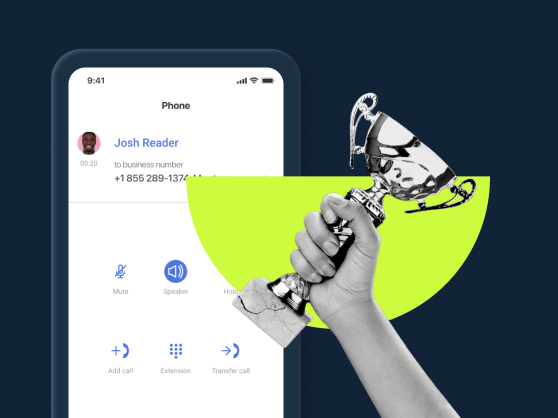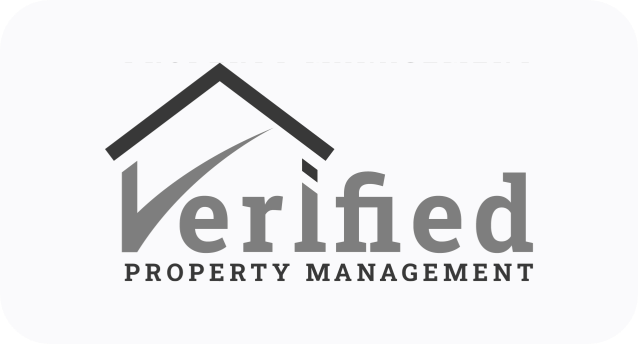Navigation:
- What is call monitoring?
- What is a call monitoring system?
- Types of call monitoring
- Does my business need call monitoring?
- How to start monitoring calls?
- How does call monitoring work?
- How to configure and customize call monitoring capabilities in MightyCall
- How to effectively monitor phone calls and get the most out of it
- Benefits of call monitoring
- Who uses call monitoring?
- Call monitoring tips
- Features that work well with call monitoring
- Enhance your call center’s performance by using call monitoring system
What is call monitoring?
The process of call monitoring means listening to your agents’ calls in order to help them
improve the quality of their work, whether that be in general terms or with the specific business call they are undertaking at that moment.
When a supervisor is monitoring, their aim is to enhance customer interactions. Typically, call center agents’ supervisors listen to live calls, while the quality assurance team or contact center manager may use it for call quality monitoring after the phone call has ended.
What is a call monitoring system?
A call monitoring system is the technological service which allows you to engage in an on-call monitoring process and has become a crucial tool managers at call centers use to monitor their agents. These systems can even be used by a small business.
As opposed to a mere listening device, MightyCall’s call center software allows managers to actually act in the relevant phone calls, helping a struggling agent or even ending a call should it turn hostile.
Types of call monitoring
This is one of several techniques that a business and contact centers can use to enhance agent performance and manage training programs that increase efficiency and productivity. There are several types, and the usage of each will depend upon a given situation.

- Call Listening: With this call monitoring feature, a supervisor listens in on a live call without interfering or saying anything. They can pop in and out, take notes if they notice something they want to mention to the agent later, and can use it to provide feedback.
- Call Barging: Here, the supervisor jumps – or “barges” – into the on-going call to speak directly with the customer. Perhaps the agent is forgetting an important piece of information (or saying something incorrectly), or perhaps the customer asked to speak with a manager and the manager was listening at the time.
- Call Whispering: The call whisper feature is more subtle. Here, a supervisor talks directly to an agent during a call without the customer’s knowledge. This can be a helpful coaching tool, explaining to an agent to mention something they may have missed.
- Call Intercept: This, on the other hand, is the most severe type of phone call monitoring. When this is used, the agent is disconnected from the call, and the supervisor takes over the conversation directly with the customer.
- Call Recording: While this does not specifically involve real-time monitoring, it does involve call listening. That’s because with this, managers can record calls for review at a later time. You can see call duration, who the call was from, who was to, and of course what was said.
Does my business need call monitoring?
While you may think it is useful to have every tool possible – just in case – you may not need all of them. Business call monitoring is a very helpful tool in some situations – but in others, it just is not really necessary. Here are some examples of when you should consider using it – and when you shouldn’t:
When you should
- You have a ton of employees who may be new: When you have a lot of new agents, it’s possible they are going to need some extra help/some beginner’s coaching. With a call monitoring tool, you can provide that service.
- You are trying to improve customer service: Maybe you are getting some negative feedback from customers – or maybe you just want to take a good thing and make it even better. Either way, by listening in on and helping to alter the outcome of phone calls (mobile calls or otherwise), you can improve said service
When you should not
- You have one employee who is continuously not performing: If there is only one agent having an issue, there are more personal/specific ways to get them then casting such an incredibly wide net
- You have controlling tendencies: This may take some personal introspection, but it’s a genuinely important aspect. If you think you want this service just because you always want to micromanage, you might want to take a step back and reconsider
How to start monitoring calls?
The process is easy with MightyCall’s supervisor dashboard. You can listen to the telephone conversation or assist your agent without interrupting or disturbing the customer.

Here are the steps to monitor outbound calls with MightyCall:
- Open your MightyCall’s supervisor dashboard.
- Select the call you wish to monitor.
- Click on the option to listen to the phone call or join the conversation with just one click.
How does call monitoring work?
You may think that this is difficult, or that it involves some sort of technological difficulties. But fear not: while each company may do it slightly differently, it often follows this general (and easy to follow!) structure:
- Start off: To start to monitor calls, companies will generally have some sort of central area online from which supervisors can view ongoing calls.
- Look at ongoing calls: Supervisors – and you should be, if you want to monitor – often have the ability to see which calls are ongoing and to listen in, and they are often given that ability by someone else (their own supervisor or another one, depending on the software).
- Select from your options: Different services allow for different monitoring options, but they all oftentimes have things like listening or other features.
How to configure and customize call monitoring capabilities in MightyCall
There are a lot of different ways you can use the monitoring function. Here are some details on how you can actually get it done with MightyCall:
Call Listening
This is what it’s all about, no? The central aspect of this is the ability to monitor live calls which are going on. Here is how to get started:
- Open the dashboard; as a supervisor, you should have access.
- You’ll see a list of ongoing calls. You can select whichever call you would like to listen to.
- When you have made your selection, click on the “Listen” icon (it looks like an ear). Listen up!
- When you’re finished, click the icon again.
Call Whisper
This feature, allowing you to speak to agents while they are speaking without the other person knowing, is quite handy. Here’s how:
- Like before, start on the dashboard in the MightyCall web panel.
- Select from the ongoing calls which you would like to “whisper” into.
- Click on the “Whisper” icon (it looks like a megaphone). Then, start speaking!
- Click again to finish.
Call Barging
Sometimes you need to forcefully barge into a call and speak while the agent is still there. Here’s how:
- Once again, start on the dashboard.
- Pick from your list of ongoing calls.
- To barge successfully into a call, click the icon which has two lines going into one arrow.
- Click again to stop barging.
Call Intercept
What call monitoring means is not just related to listening or taking part with agents – it can also help you to get into a conversation quickly and remove the agent? No problem, it happens. Here’s how to do it quickly:
- Start on the dashboard (though if you know an agent already needs to be removed – perhaps via listening – you may already be there).
- Select the call you want to intervene into.
- Click the Intercept icon (it looks like an arrow which goes in one direction and then curves away).
- The agent will automatically be removed. Start speaking – you are now talking with the caller!
How to effectively monitor phone calls and get the most out of it
MightyCall’s call monitoring software is integrated into its framework, providing you with easy access whenever you need it.
Benefits of call monitoring
This feature is an incredibly helpful part of a business phone system, and can help every aspect of a business. Here’s how:
How companies can gain:
- Boost sales by improving the quality of sales pitches: By monitoring calls, you can help figure out what your agents might be doing wrong – and you can help them to improve.
- Keep a positive image of your company: have you had customer complaints about rudeness or agents otherwise not matching up to standards? You can figure out what is really happening.
- Develop a company that focuses on continuous learning and improvement: When agents know they could be being monitored at any time, they’ll understand that learning and improving is a company value and will try to emulate it.
- Increase sales: By finding out how people can improve, you can shave off unnecessary distractions and generate more revenue.
- Maintain customer satisfaction: All of these come together into the goal of many companies: maintain higher satisfaction so that customers come back for more.
How supervisors and managers can gain:
- Constructively evaluate agent performance to improve overall performance: Identify areas where agents need improvement: With the example-specific information you can get from call monitoring, you can design tailored training sessions accordingly.
- Offer solutions to prevent escalations in challenging situations: Sometimes customers can get rude. Sometimes agents can. In those moments, monitoring can help you step in and avoid seeing a conversation boil over.
- Enhance feedback data: Have customers who have been called on your shift reported certain unfavorable feedback, or are things in feedback unclear? With monitoring, you can clear up discrepancies.
How agents can gain:
- Help them get better at their jobs: With things like whisper, contact center supervisors can helpfully let you know what you may have missed, or something else about a customer – allowing you to make a better pitch or give a better performance.
- Address complaints without hearing from customers twice: With help from above, you can address all customer concerns or complaints in one go.
- Receive assistance when required: Unsure about something, or dealing with a truly aggressive customer? Your supervisor can come to your rescue.
- Boost productivity: You can get more done when supervisors are ready to help.
Who uses call monitoring?
Each part of your team can successfully find ways to use a phone call monitoring system. Here’s how:
Call Center Managers
A call center manager needs to oversee – or manage – the staff under their supervision. When that staff is making calls constantly, that can be almost impossible to do – unless they utilize real time call monitoring. That way they can widely extend their purview quickly and easily, without even having to leave their office.
Salespeople
Getting down the tone and length of a pitch or a tone is crucial, especially for folks who are new to the job (them being new to the job won’t make customers any more willing to buy a product or sit through a poor pitch). With call center monitoring service however, coaching becomes incredibly easy.
Marketing
There is only so much data that can tell you. If a new line is failing, why is that happening? Is the marketing poor? Or are the staff not delivering it in the way you imagined? How are customers reacting in real-time to a new marketing direction you want to undertake? All of these can be answered by actually hearing the conversations.
Technical/Customer Service Teams
If you have poor customer service, that can negatively impact every aspect of your company. Sales will suffer, and even the best marketing won’t be able to override poor word-of-mouth. But with monitoring, you can see how your customer service teams are doing and can make sure they stay up to snuff.
Call monitoring tips
Tell people you’ll be monitoring
You do not need to inform people every single time they are being monitored, and most types of call monitoring don’t alert the agents to your “presence.” But if you call an agent in and start playing their conversation, you may find that they’ll be a tad offended. If you let them know in advance that you are listening in, they’ll feel more comfortable and trusting.
Take note of the extremes
Most of the calls which you are going to be listening to are going to be of the same call quality and will sound very similar. But some calls are going to be exemplary – and some are going to be examples of what not to do. See what works and what doesn’t, and consider incorporating it into future coaching sessions.
Have a goal in mind
While you may think it’s a good idea to just listen for the sake of what’s going on – and we’ll get to that next – generally speaking, it’s best to go in monitoring agents calls with a specific idea in mind. Think about what you want to undertake: do you have a specific thing that you’re hoping your agents do? Are you looking for specific customer reactions?
Get a general view before taking action
At the same time, it’s important to get a view of the playing field, so to speak. You should know what is going on in standard calls as well as the extreme ones, so you should make sure to get an idea of what generally goes on day-to-day. Hearing actual agents speak is wildly different from just seeing data points on a paper after the fact.
Make changes
Once you’ve gathered some information, it’s important to actually make changes based on what you’ve learned. Don’t just sit back on it – it’s important that you convey to your agents the ways they can improve. But be sure to also highlight what they are doing well!
Features that work well with call monitoring
Call Flow Designer: Visualize the path of your contact center callers: see whom they reached, which departments they interacted with, and how long the call took with the Call Flow feature. You will have a clear chart for your convenience.
Call Routing: Call Routing allows you to decide what happens with the incoming calls at any given time. Redirect calls to your coworker, a different department, or your personal device.
Call Center Dashboard: Optimize call center management with a comprehensive dashboard. This tool allows managers to gauge agent efficiency and effectiveness, ensuring operational excellence and high-quality customer service.
Mobile app: Get a mobile app on your phone with the full feature set for free on iOS and Android in order to facilitate your access to business communication at any time from your home or office.
Enhance your call center’s performance by using call monitoring system
Think about it this way: if you want to have an extra ear out there to know what’s going on in your own company, you might want to think about a telephone monitoring system. If you want to help the agents in your call center improve their salesmanship, you might want to consider it. “Being able to improve your business” could be an unofficial call monitoring definition – so why not go for it?
You’ll be happier, your customers will be happier, and your agents will be happier. And with the plethora of other features that MightyCall offers, you’ll have no trouble improving every facet of your business communications.






































